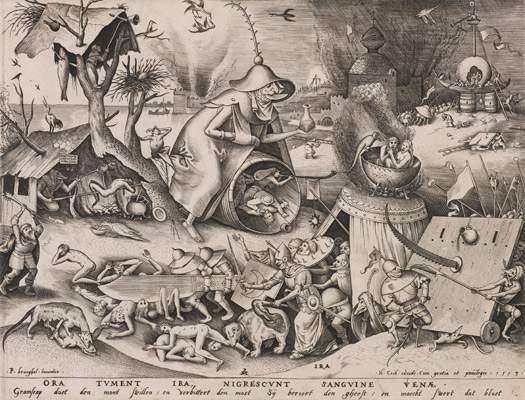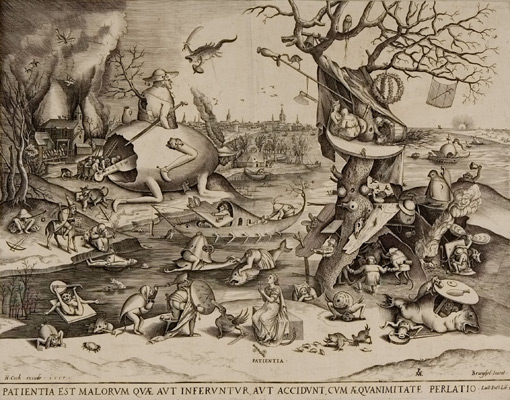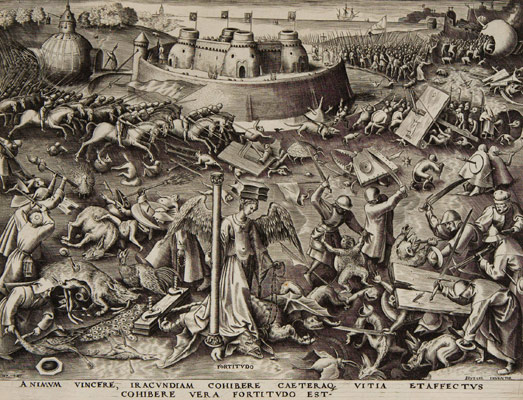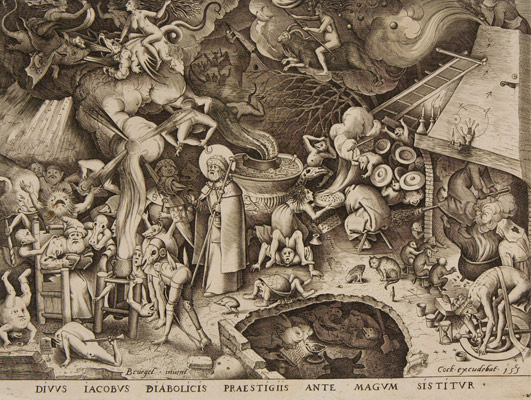When Beyond Bosch: The Afterlife of a Renaissance Master in Print opened at the Saint Louis Art Museum last year, many of the works in the show were already familiar to a small group of students from Washington University in St. Louis. They’d studied the 16th- and 17th-century prints, inspired by artist Hieronymus Bosch, in a seminar taught by Marisa Bass, assistant professor of art history and archaeology and co-curator of the SLAM exhibition. As part of the course, Bass had each student write a final essay on one of the objects as well as an associated wall label.
“I asked students to think about how you write differently for a public audience,” said Bass. “How do you get someone to look at an artwork and linger over it for more than a few seconds?”
The students’ descriptions were posted alongside SLAM’s own labels, offering an exciting moment for both the students and the public. While the students were able to see their scholarly work play out for a wider audience, the public was treated to multiple perspectives on the prints.
Now that the exhibition has arrived at the Harvard Art Museums, there’s further opportunity for learning and teaching with the works. Students, faculty, and other scholars will be spurred to think deeply about the many subjects highlighted in the exhibition—from questions about authorship and identity to the technology and history of the printed image. Harvard professors from fields as varied as Italian, art history, and dance are exploring ways to use the exhibition in their coursework.
One creative use of Beyond Bosch will be made by art history professor Joseph Koerner and law professor Noah Feldman, in their course The Enemy: Law and the Human. Koerner and Feldman will present Bosch and Bosch-related prints as one of several case studies of representations of enemies. The course will include visits to the exhibition as well as assignments involving close looking at original works.
“We will read theories and accounts of the enemy, but also look at works of art in which enemies are represented,” said Koerner, the Victor S. Thomas Professor of the History of Art and Architecture and one of the world’s foremost Bosch experts. “There’s an interesting literature about Bosch, because no one knows who his enemies were or what he thought about them. That’s puzzling, I think, for a course that covers issues about evidence and judgment.”
This year marks the 500th anniversary of Bosch’s death, and the Harvard Art Museums are one of the first institutions in the world to open an exhibition officially honoring the 2016 milestone. On Thursday, January 28, Koerner will deliver a lecture at the museums about Bosch and the effect his work had on 16th- and 17th-century printmakers. Weekly gallery talks by curatorial staff will offer an additional way for students and the public to understand Bosch and his legacy.
“During this special year, the exhibition is a great opportunity for people to see firsthand the creative impulse that Bosch gave,” Koerner said. Even now, many mysteries remain about the Netherlandish master—making him all the more suitable for sparking academic pursuits.
Beyond Bosch: The Afterlife of a Renaissance Master in Print is on view at the Harvard Art Museums through May 8, 2016. The exhibition has been organized by the Saint Louis Art Museum (www.slam.org).





